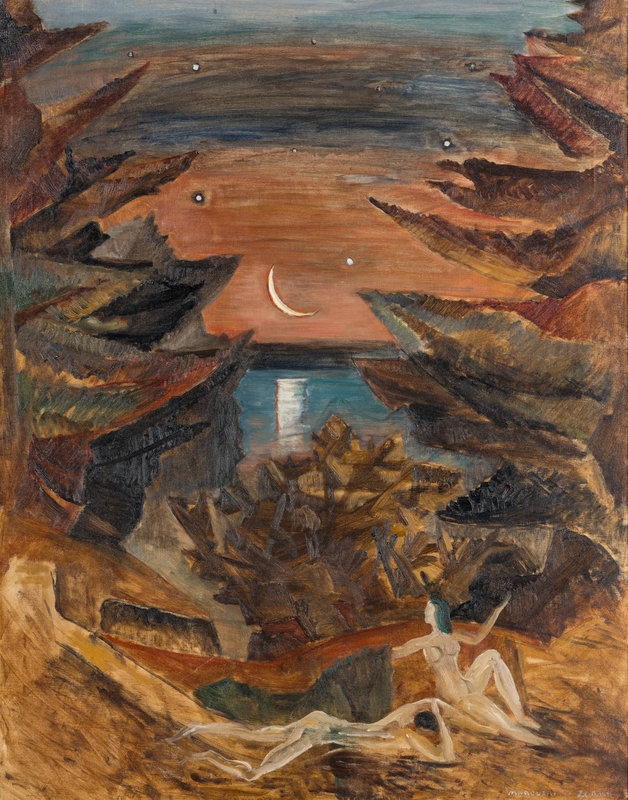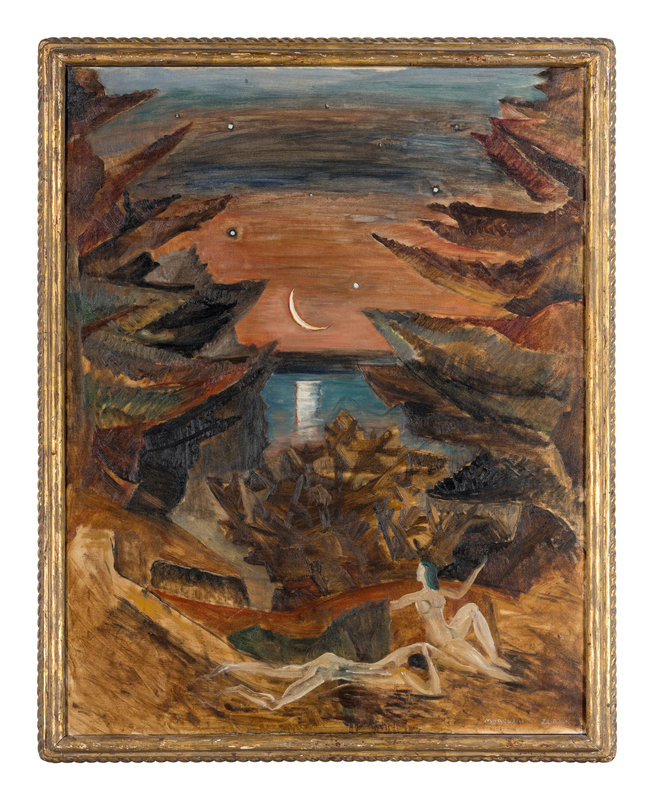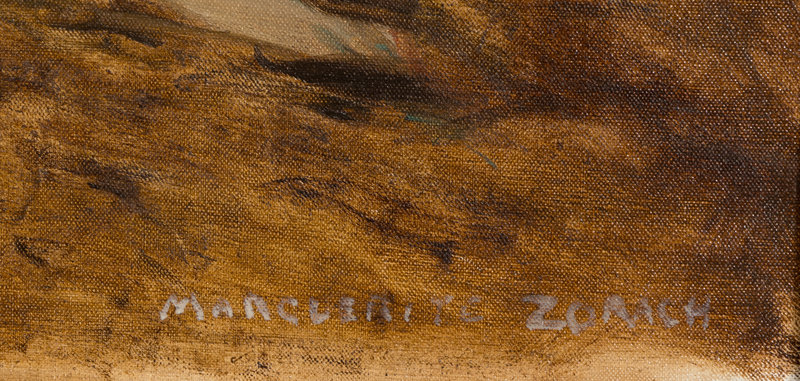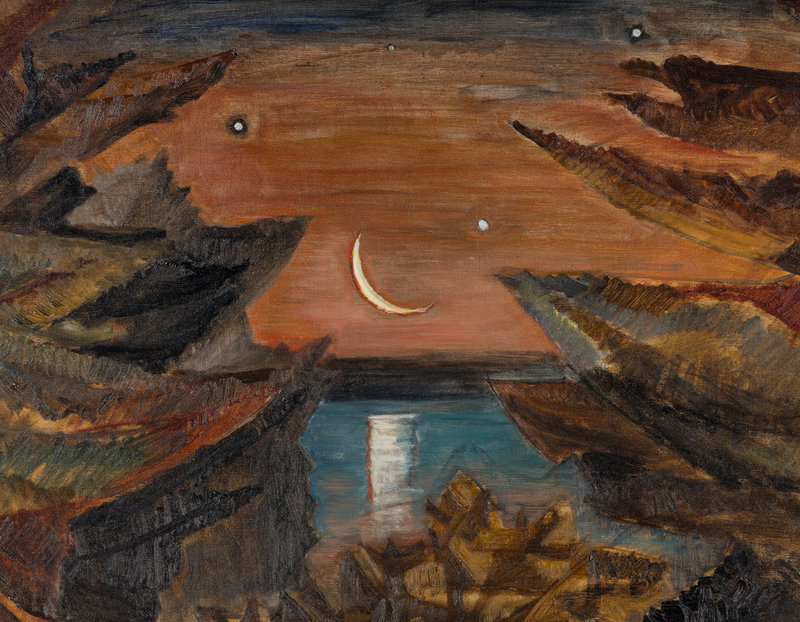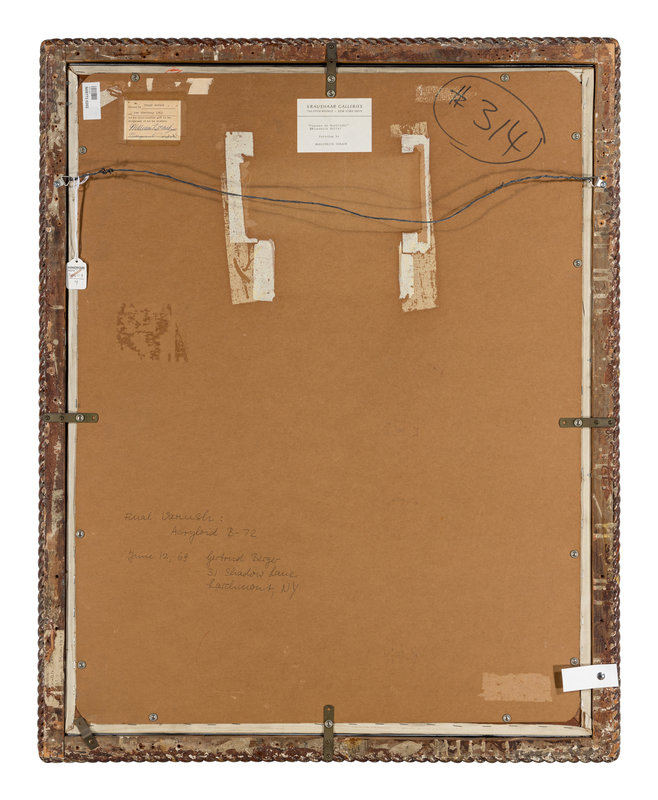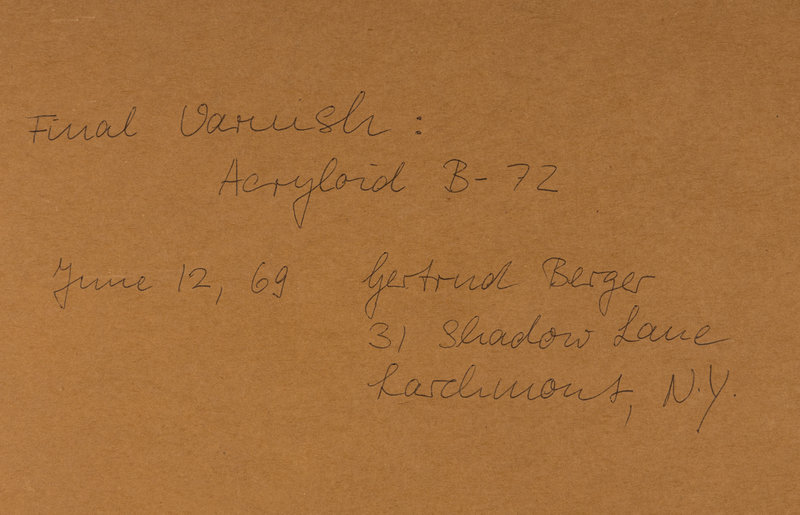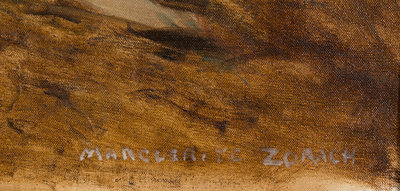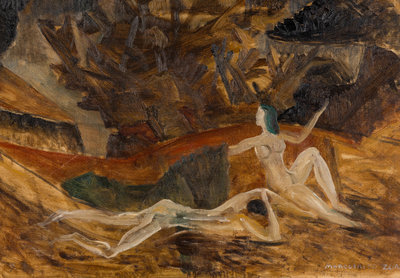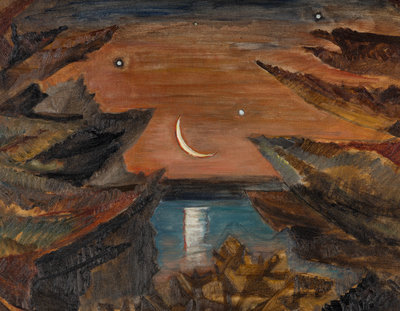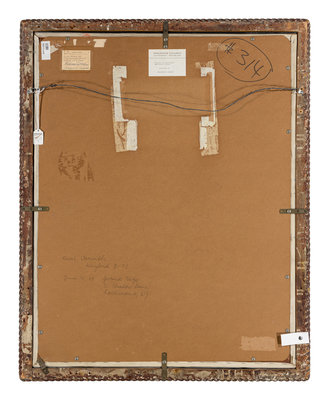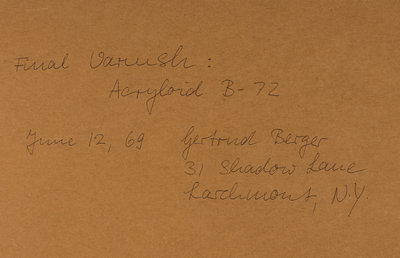Provenance:
Peggy Zorach (daughter-in-law of the Artist), 1963, gift from the Artist
Kraushaar Galleries, New York
Acquired from the above, 1986
Sold: Sotheby's, New York, September 27, 2011, Lot 202
Acquired at the above sale by the present owner
Marguerite Thompson Zorach was born in Santa Rosa, California, in 1887. She grew up in Fresno and quickly showed an interest in and aptitude for artistic expression. In 1908, she moved to Paris to further her education in the arts. She attended the Académie de la Palette, where the influence of Fauvism was prevalent. Freed from the constraints of traditional and academic precepts, she developed a more personal aesthetic. In Paris, she frequented the Modernists populating the Parisian cafés at the time, including Gertrude Stein, Pablo Picasso, or Henri Matisse. In 1910-1911, Zorach visited far-flung places in Asia, North Africa, and Hawaii before returning to California in 1912 and settling in the lower Sierra Nevada mountains. While this new setting offered the artist unparalleled inspiration, she finally relocated to New York City, where she married William Zorach, whom she had previously met in Paris. The two developed an unwavering artistic collaboration, for example exhibiting together at the Armory Show in 1913.
Notwithstanding the life-long partnership with her husband, Marguerite remained creatively independent, embracing feminist agendas and innovative forms and media, notably experimenting with textiles. She was resolutely a Modernist artist, subscribing to the notion that fine art and craft weren’t intrinsically opposed and, in fact, meshed well together. She also served as the President of the Modernist New York Society of Women Artists. During her lifetime and career, Marguerite Thompson Zorach wasn’t quite afforded the widespread critical recognition that she deserved. It wasn’t until after her death in 1968 that her work came under more astute scrutiny, revealing its role as an original and significant catalyst behind American Modernism, and not merely an instance of it.
